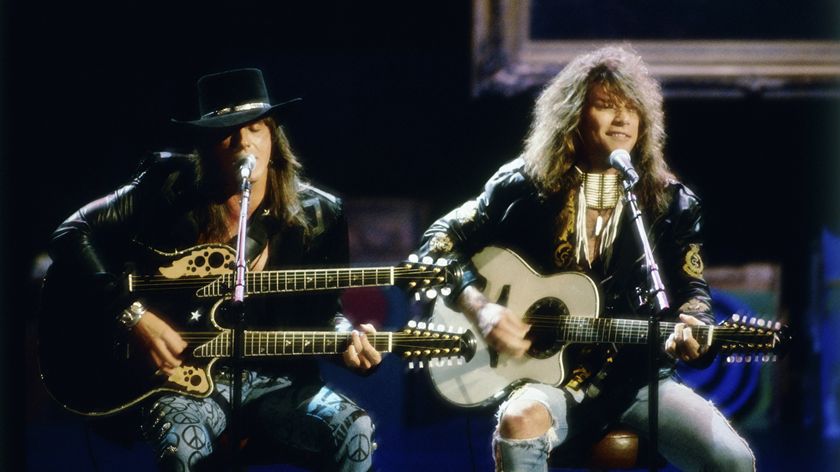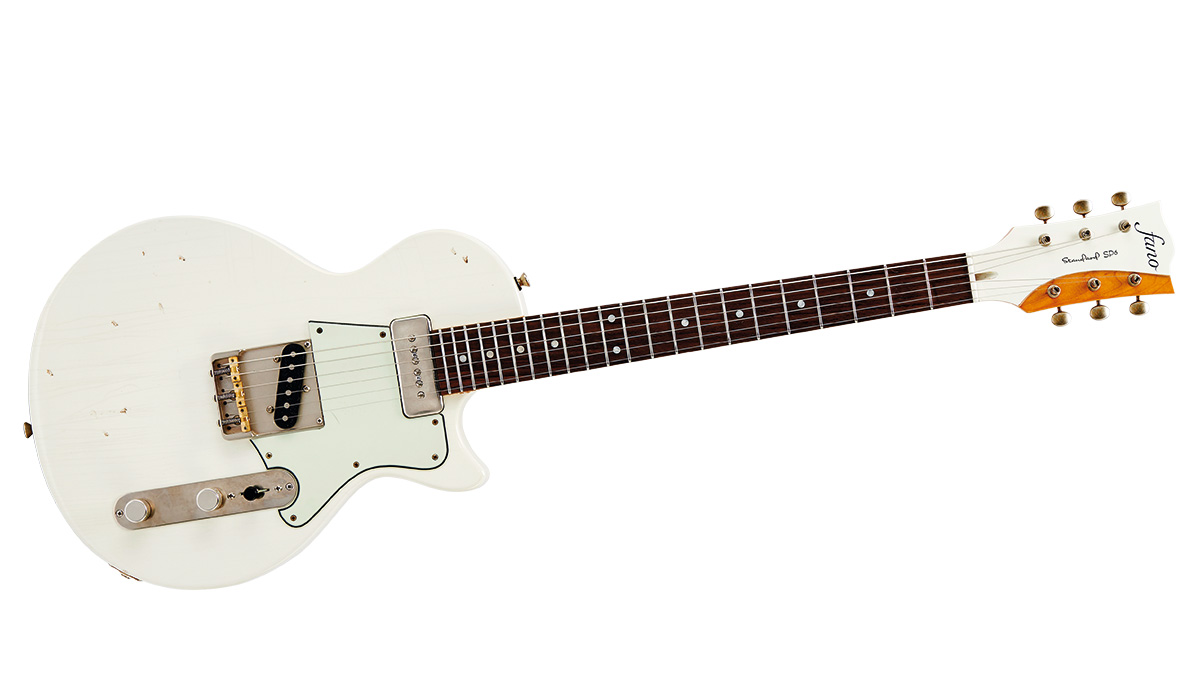MusicRadar Verdict
As versatile as the two classics that inspired its creation, the SP6 feels like a guitar without limits.
Pros
- +
The Standard SP6 combines the best of two great guitars to make something truly exceptional.
Cons
- -
No left-hand option; some might expect a hard case when spending this much money.
MusicRadar's got your back

Fano Standard SP6

Fano Standard SP6

Fano Standard SP6
Those familiar with Fano Guitars and its Alt de Facto range will know that founder Dennis Fano took his inspiration from vintage classics while offering contemporary playability and feel.
Although Dennis is no longer with Fano Guitars, you can still spec Fano-designed Alt de Facto guitars in various body styles and finishes and with your preferred level of distressing. But his stuff ain't cheap with a base price of £2,299.
Launched earlier this year, however, were a pair of keenly priced off-the-peg Fano Standard Series models, including one that answers the question: what would have happened if Leo Fender and Gibson genius Ted McCarty had collaborated on a guitar? Yes, the Standard SP6. It looks like a Telecaster that showed up at a fancy dress party wearing a Les Paul Junior outfit. Or a Les Paul in a Telecaster t-shirt. It depends on your point of view.
Picking the thing apart, the alder body and bolt-on maple neck pay homage to the Telecaster. That goes for single-coil Fano T bridge pickup and the control plate with its master volume, master tone and three-way pickup selector blade switch.
Despite the shadow it casts, the Standard SP6 is closer tonally to a T-style machine than a Les Paul
The bridge is obviously influenced by Leo's first great electric, too: more on that in a minute. The body shape and depth obviously hail from the Les Paul Special side of the tracks, as does the three-a-side headstock format, 629mm (24.75- inch) scale length and neck position P-90.
Oh yeah, the bridge. It looks like your classic ashtray, the archive effect enhanced by three brass saddles (compensated for good intonation). The bridge plate is actually machined from billet aluminium with reassuringly thick sidewalls that hold the saddles snugly in place.
The strings run through the body, anchored with a sustain block that's bolted to the bridge plate. Someone's put a lot of love into designing this thing. It was time well spent.
Feel & Sounds
In addition to its lightly relic'd nitrocellulose finishes, this guitar features a rosewood 'board occupied by 22 medium Jescar 6105 frets.
The SP6 is running what Fano calls a "late 50s round back" (vital statistics: 21.8mm to 24.6mm) neck. While it's chubby, you're not talking Nocaster-a-like girth here. More like the palm-filling feel of a '58 Les Paul. In other news, great playability is assured with a 254 to 406mm (10 to 16-inch) compound radius.
Despite the shadow it casts and its shorter Gibson scale, the Standard SP6 is closer tonally to a T-style machine than a Les Paul. You can chalk that up to the tonewoods involved inits construction. The body thickness and the over-engineered - in a good way - bridge conspire to promote bags of sustain and the bridge T pickup is warmer sounding thanwe expected.
It's that 'warm treble' you hear Tele addicts going on about. The bridge unit still cuts through, without shrillness, and the balance between it and the neck position P-90 is exceptional, with virtually no change in volume when you flick the switch.
The latter pickup is a dream for noodly upper-'board blues stuff: warm and woody on clean and lightly overdriven sounds; flutey and almost synth-like with the gain cranked up.

"It’s a piece of music software history": ReCycle gets recycled as Reason Studios makes the classic sample editor available as a free download

“The verse tricks you into thinking that it’s in a certain key and has this ‘simplistic’ musical language, but then it flips”: Charli XCX’s Brat collaborator Jon Shave on how they created Sympathy Is A Knife

“I’ve seen a million faces and I’ve rocked them all!”: Was Bon Jovi’s 1989 acoustic performance really the inspiration for MTV Unplugged?










